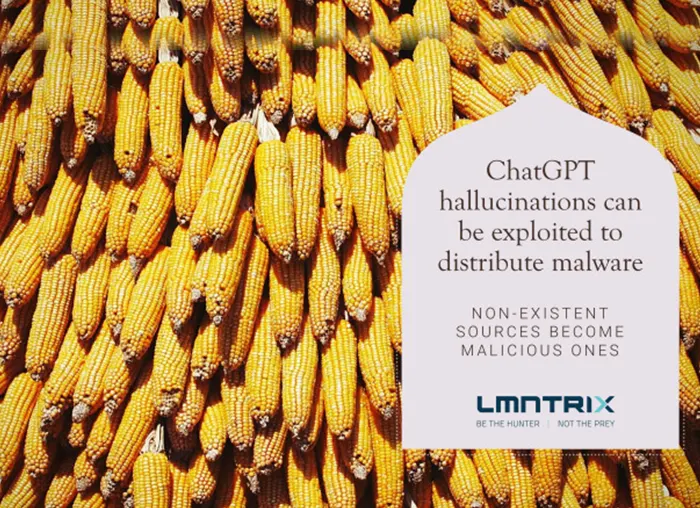
In the realm of cyber threats, the landscape continues to evolve, taking on new and unexpected forms. Recently, the Vulcan Cyber Voyager18 research team brought to light a concerning Proof of Concept (PoC) that underscores the potential misuse of advanced AI technologies. The PoC showcases how attackers could exploit ChatGPT, an AI-powered language model, to distribute malware, ushering in a new era of threats that demand our immediate attention.
The Multi-Stage Attack Unveiled
The attack orchestrated by the Vulcan Cyber Voyager18 research team consists of three distinct but interconnected stages, highlighting the cunning tactics employed by malicious actors:
- Prompts for Illusory Coding Help: In the first phase, the attackers initiate a seemingly innocuous interaction with ChatGPT, prompting it to assist in coding tasks and locate non-existent code packages. This establishes a foundation for the subsequent malicious actions.
- Substitution of Malicious Code: Leveraging the false packages discovered earlier, the attackers swap in real malicious code, capitalizing on the unsuspecting nature of these actions to lay the groundwork for their nefarious objectives.
- Baiting Unsuspecting Developers: The third phase capitalizes on the trust developers place in the AI-generated content. Unsuspecting developers are tricked into downloading the seemingly innocuous code, which is, in fact, tainted with malware.
Navigating the Challenging Terrain of AI Security
The implications of this PoC underscore a pressing need for heightened awareness and vigilance within the cybersecurity community. As AI technologies, like ChatGPT, continue to proliferate across industries, it is imperative to understand both their potential benefits and their newfound risks.
While generative AI holds immense promise for enhancing efficiency and productivity, it is paramount to acknowledge its limitations. The outputs of AI models may not always be accurate or safe, necessitating thorough verification before integration into critical business processes.
Evaluating Risks and Embracing Best Practices
As organizations venture into the realm of generative AI, a balanced approach is essential. With this emerging technology comes inherent risks, and it is incumbent upon us to navigate these challenges with prudence and foresight. LMNTRIX proposes the following recommendations to mitigate the risks associated with generative AI:
- Implement an Acceptable Use Policy: Establish a clear and comprehensive policy governing the utilization of generative AI within your organization. This policy should delineate acceptable use cases and set guidelines for verifying AI-generated outputs.
- Educate Staff on Risks: Provide training for staff who engage with generative AI tools, imparting knowledge about the risks associated with data confidentiality, integrity, and the potential for malicious exploitation.
As AI capabilities continue to advance, so too must our understanding of the risks that accompany them. By embracing these recommendations and fostering a culture of vigilance, organizations can harness the benefits of generative AI while safeguarding their digital landscape against emerging threats.
For more information on this concerning discovery, visit the Vulcan Cyber website and find additional insights on Dark Reading.


